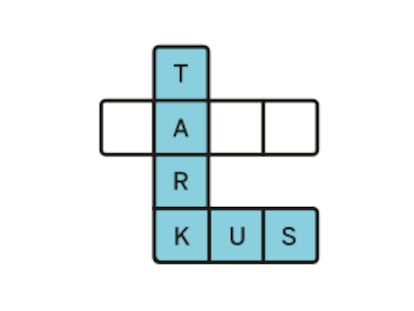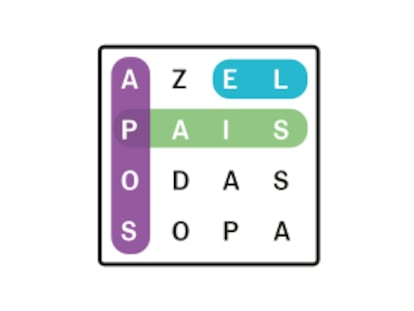Graphene: from relativistic quantum theory to future electronics
Could solving the problems of theoretical physics, seemingly distant from reality, influence our daily life? The story of graphene, already being called ‘the wonder material’, suggests the answer is ‘Yes’
We take it as given that all properties of matter originate from the laws of quantum mechanics. We rarely realize, however, that the true power of the nearly hundred-year-old quantum theory lies not in its ability to explain observed phenomena and properties of existing materials but on its so-called ‘predicting ability’—quantum theory can tell us how a new material will behave when it exists only in the mind of a scientist or on the virtual drawing board of a computer well before the material is created in the laboratory. The quantum theory’s predictive ability, for example, allows it to play the role of genetic engineering in the inanimate world.
Rapid development in the last 25 years in microelectronic devices has been accompanied by landmark changes in the spread of scientific information, preprint databases and open access journals being two examples of what the information revolutions has achieved. Together, the two developments have dramatically decreased the time it takes to turn a mathematical concept into a functional device based on that concept. This article tells the story of graphene, the material which I had an opportunity to work on directly soon after it was discovered in 2005, and also mentions a few other fascinating materials, developed in the last few years, that may soon show their potential.
In 1928 Paul Dirac wrote an equation describing the dynamics of an electron satisfying the demands of both quantum mechanics and Einstein’s special theory of relativity. The Dirac equation served as the foundation of the relativistic quantum theory, which could explain many phenomena that the non-relativistic theory had left unexplained.
At the same time, the relativistic quantum theory led to a series of results that conflicted with common sense, such as the existence of antimatter (positrons, for example, discovered in 1932 by Carl D. Anderson) and the Klein’s paradox (which claims that a beam of electrons incident on a potential barrier of infinite height is fully transmitted). Over the next few decades, many mathematicians and mathematical physicists studied solutions of the Dirac equation in different situations. A particularly popular version of the equation was the one describing electrons in the two-dimensional world, for which numerous exact solutions were available. Such studies seemed particularly removed from reality: our world is, after all, three-dimensional.
Graphite and diamond, the only crystalline forms of carbon known in the mid-1980s, are three-dimensional. Graphite, which is the more commonly found form, consists of separate layers each only one atom thick, which have a honeycomb-like structure. The layers are relatively weakly bound to each other, and separate easily—a property that makes writing possible, the pencil simply transferring the material to paper. In 1984, Gordon W. Semenoff showed that electrons in a single layer of graphite (later called graphene) are described by the Dirac equation in its simplest form, valid for particles in a two-dimensional world that have no mass. Isolating a single layer of graphite, however, seemed a remote possibility at that time. A breakthrough in our knowledge of different forms of carbon followed soon enough in the form of fullerenes (1985) and nanotubes (1990). Why did it take another 15 years to move from graphite to graphene? Most probably, it was the dogma that such a truly two-dimensional system cannot exist in our world: after all, none of the materials known at that time could form a layer that is only one atom thick and yet remains stable after being separated from the rest of the substrate.
Graphene was discovered by researchers from the University of Manchester, Andre Geim and Konstantin Novoselov, together with colleagues from Russia and the Netherlands. In a paper published in Nature in 2005 they describe a field-effect transistor built entirely from graphene, which makes it possible to change the concentration of charge carriers smoothly by applying an external electric field and even to fully replace electrons with holes and vice versa. Such a device has no counterpart in silicon-based electronics. Recently, researchers at IBM achieved two major successes in fabrication of devices entirely build of graphene: in February 2010, transistors with an on and off rate of 100 gigahertz (far exceeding the rates of previous attempts) were created. Next, in June 2011, the first graphene-based integrated circuit (a broadband radio mixer) was built. These achievements show that graphene electronic nanodevices can conceivably replace silicon ones.
The contribution of Geim and Novoselov to condensed matter physics, honoured with the Noble Prize in 2010, goes far beyond the discovery of a very interesting material; what is potentially much more important is their attempt to change the prevailing dogma in many fields of science. The scientists decided to publicize the method of isolating graphene giving full details of the process using instructional videos and organizing training courses for members of competing teams. Thus, research on graphene was undertaken immediately by a few dozen teams from around the world, leading to unprecedented explosion of publications and citations related to the material. The theoretically predicted properties of the new material were soon confirmed experimentally, the two most interesting among them seem to be electrical conductivity and visible light absorption, two properties that can be expressed solely in terms of the fundamental constants of nature: the electron charge, the speed of light in vacuum, and the Planck constant.
More interestingly, the relatively large conductance of the monolayer is accompanied by the absorption of light in very small quantity (about 2%), making graphene a promising building block for electrical circuits in LCD screens and in e-paper.
Among the diverse applications of graphene currently being considered, those related to spintronics are the most advanced. In contrast to classical electronics, which operate on the electron charge and are slowly approaching the limits set by quantum mechanics (going by the famous Moore’s Law, the development in chip performance will come to an end by 2025 or so), spintronics focus on a different property of the electron: the so-called spin (or the magnetic moment). To turn around a spin requires much less energy than charge translation; therefore, the fundamental constraints to the development of spintronics lie far beyond those that apply to classical electronics.
Graphene is a particularly convenient material for spintronic applications because of its high level of quantum coherence: an electron injected into graphene by an external electrode (made of a ferromagnetic metal) retains its identity (and the spin orientation) for a very long time. Moreover, electrons in graphene have an additional quantum number (valley index), and the same operations can be performed on them as those performed on the spin. Electronics that make use of the valleys in graphene (called valleytronics) seem attractive because valley information is extremely robust against scattering from lattice defects, external potentials, etc. Several versions of valleytronics were discussed theoretically: in 2007, researchers from Leiden University proposed to build a valley filter using a constriction with zigzag edges. In 2010, physicists from the University of Konstanz pointed out that the so-called Rabi oscillations between quantum states belonging to different valleys may appear in carbon nanotube quantum dots. Very recently (April 2011) scientists from the Naval Research Laboratory in Washington showed that a line defects may lead to nonequilibrium valley polarization even in bulk graphene without the necessity of confining an electron.
Finally, it is worth mentioning other promising future electronic materials with stories similar to that described above. In 1971, Dyakonov and Perel theoretically described the phenomenon that later came to be called the spin Hall effect (the name coined by J.E. Hirsch, an American physicist). If an electric current flows through a rectangular sample of suitable material, opposite magnetization appears on the sample’s edges. In contrast to the classical Hall effect, no external magnetic field is required to obtain the spin Hall effect, which originates from electrons scattered by impurities in the material, thereby introducing the spin-orbit coupling. The spin Hall effect was first observed experimentally in 2004, almost simultaneously with the discovery of graphene, and quickly became one of the main effects employed in spintronics systems.
It is difficult to name right now the materials and phenomena discussed here that will find large-scale applications in future electronics: it is possible that some totally different materials, unknown today, will upstage these materials. What is certain, however, is that the nearly hundred-year-old mathematical tools provided by the quantum theory will play a key role in the design of new materials.







































































